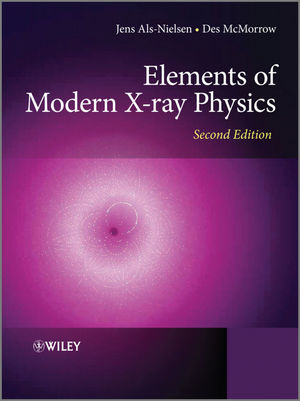Elements of Modern X-ray Physics, 2nd EditionISBN: 978-0-470-97394-3
Paperback
448 pages
April 2011
 This is a Print-on-Demand title. It will be printed specifically to fill your order. Please allow an additional 10-15 days delivery time. The book is not returnable.
|
||||||
Professor Emeritus Jens Als-Nielsen of the Niels Bohr Institute, University of Copenhagen, has been a pioneer in the field of neutron and x-ray scattering contributing to setting high standards for large international synchrotron centres. Today Jens Als-Nielsen's research is still - even after his official retirement - concentrated around x-ray radiation's potential in biological and medical research.? He was educated as a civil engineer in the field of electrophysics and from 1961-1995 was employed at the Riso National Laboratory, as section leader for the Solid-State Physics Section and later as division leader for the Physics Division. He has spent time at the European Synchrotron Radiation Facility, ESRF, Grenoble. From 1995 until his retirement in 2007 he was professor in experimental solid-state physics at the Niels Bohr Institute, University of Copenhagen. In 1985 he received the European Physical Society's Hewlett-Packard prize in solid-state physics and in 2009 the Velux Fonden's Honour Award for his research in the field of neutron and X-ray scattering.
Professor Desmond McMorrow is Professor of Physics at University College London. He received his B.Sc from Sheffield University in 1983and his PhD in 1987 from the University of Manchester. After spending time in research at Edinburgh and Oxford he then worked with at the Riso National Laboratory and collaborated with Professor Als-Nieslen between 1998 and 2003. In 2004 he took up his position at UCL and received from 2004 - 2009 the Royal Society Wolfson Merit Award. His research is focussed on understanding how electrons organise themselves in solids to produce the wonderfully diverse range of phenomena encountered in modern condensed matter physics. His research is based mainly on using x-rays and neutrons to probe the structural and magnetic correlations that dominate the low-energy behaviour of these and other interesting classes of solids.



